By Michael J. McNamara
Have you ever taken a selfie with wild butterflies flying around you? Or gotten so close to a butterfly that you could hear its wings flap as it flew to another flower? For Summer visitors to the flower gardens at Fishkill Farms In Hopewell Junction, NY, the answer is often “Yes! Want to see my phone shots?”
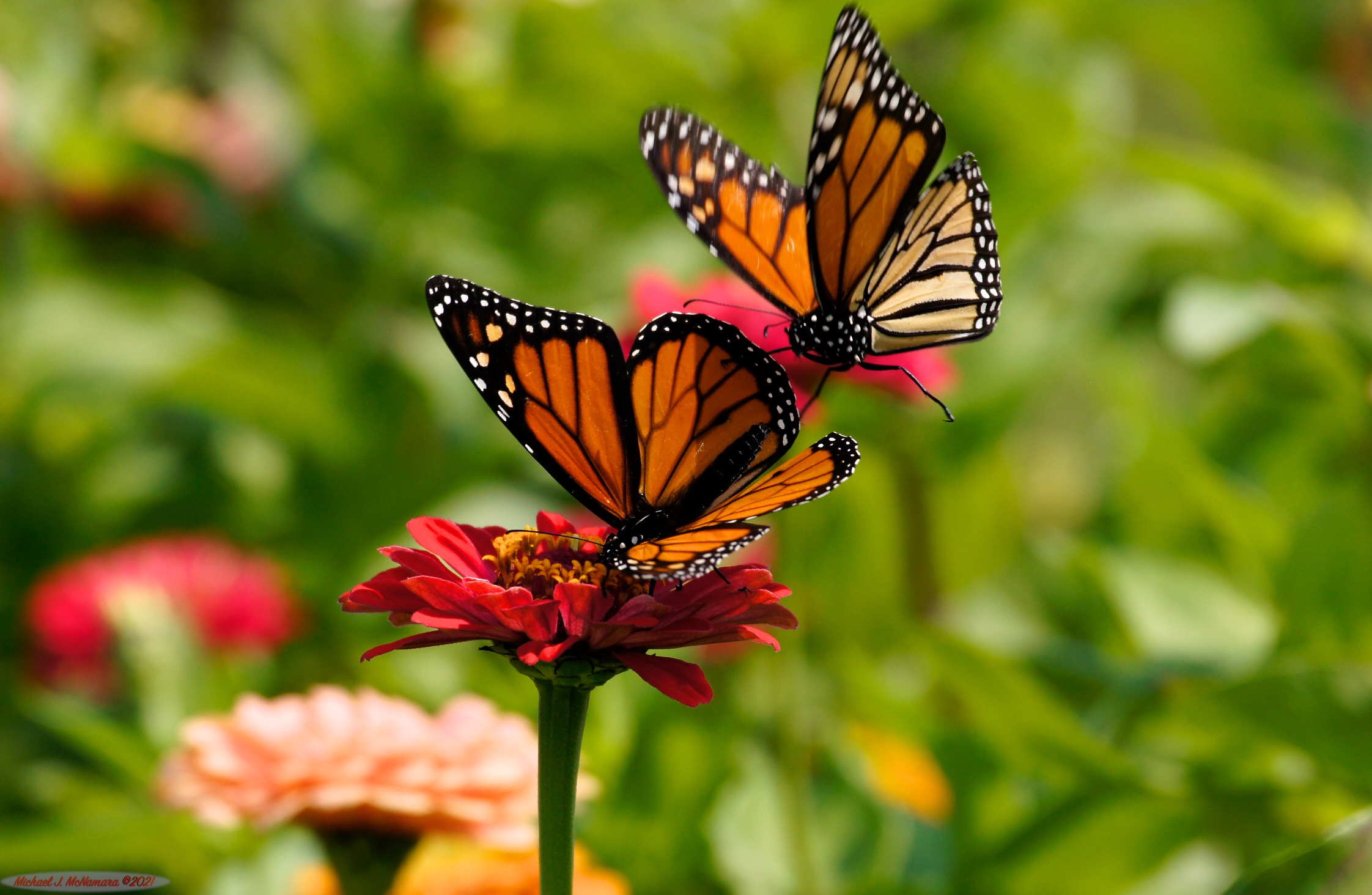
That’s because the farm’s organic gardens are like a well-stocked grocery store for butterflies and other pollinators, offering thousands of flowers to feast on and a safe place to breed. The abundant food supply has two unusual effects on otherwise skittish butterflies. First, they slow down while eating, and second, they let humans get much closer than normal–often within inches, not yards.
In the years that I’ve been taking pictures of these colorful creatures I haven’t found any outside gardens in lower NY (including those that charge entrance fees) that contain nearly as many migrating Monarchs and native butterflies. As an example, during a short walk on July 30th I counted over a dozen migrating Monarchs, a Queen Butterfly, several Great Spangled Fritillary, and nearly two dozen Yellow, Black, and Spicebush Swallowtails. (Read on for info on how to identify these butterflies.) I didn’t even count the smaller butterfly species present in far greater numbers, including Sulphurs, Red Admirals, and Viceroys. All-in-all, not a bad way to spend my lunch hour.
My experience at the farm is not unique. I constantly hear farm visitors expressing their amazement at the number of butterflies they’re seeing and how close they (and their kids) are able to get. For butterfly lovers, multiple visits to the farm’s flower gardens should be on your to-do list between now and mid-October. There’s no fee to enter the gardens or farm during the week, but after Labor Day the Fall Festival Weekends get quite crowded (and may require a reservation).
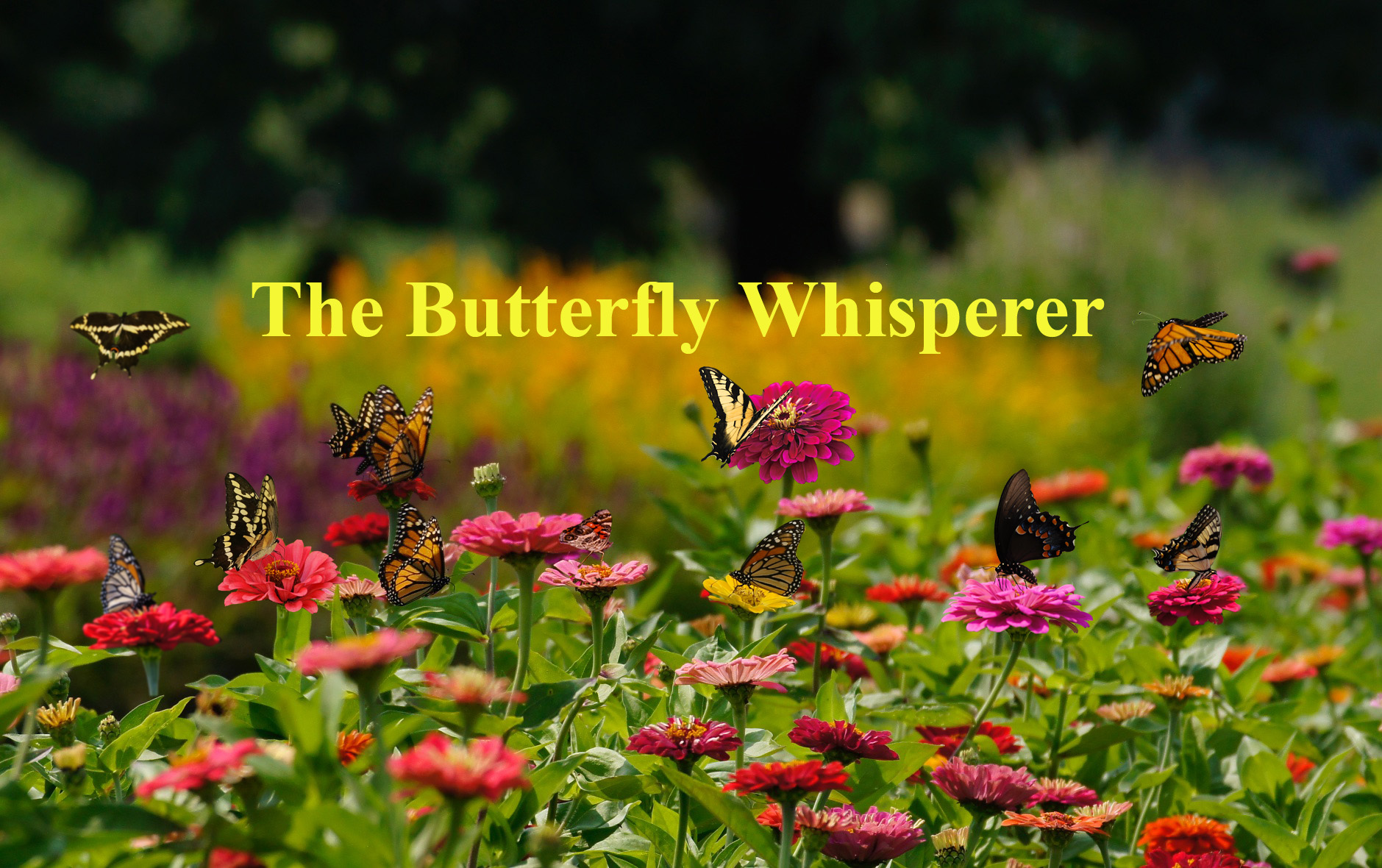
Did you know there are over 57 butterfly species native to NY, and the caterpillars from each species require specific host plants to lay their eggs on? In order to help you identify the larger butterflies that you’ll likely see at the farm or in your own garden, as well as the favorite host plants for each species, I’ve put together the following photos and helpful hints. If you want to attract any or all of these butterflies, consider adding some of the host plants and herbs listed to your gardens along with a variety of high-nectar flowers such as Zinnias. Note: Avoid using pesticides on host plants as they are just as likely to kill caterpillars and honey bees as the are to kill beetles and other garden pests.
The Monarch Butterfly is only migrating butterfly found in the North America, and one of the few migrating insects found worldwide. As a mature butterfly it will drink nectar from just about any flowering plant, although I’ve noticed it really loves Zinnias, Coneflowers, and Orange Butterfly Weed. Only male Monarchs have two distinct black dots on the upper side of their hindwing (one on each side), while females also tend to be a bit smaller than males. A fascinating fact: While mating, the male Monarch stays attached to the female and flies her around from flower to flower for nearly 14 hours on average, losing up to 15% of his body weight in the process.
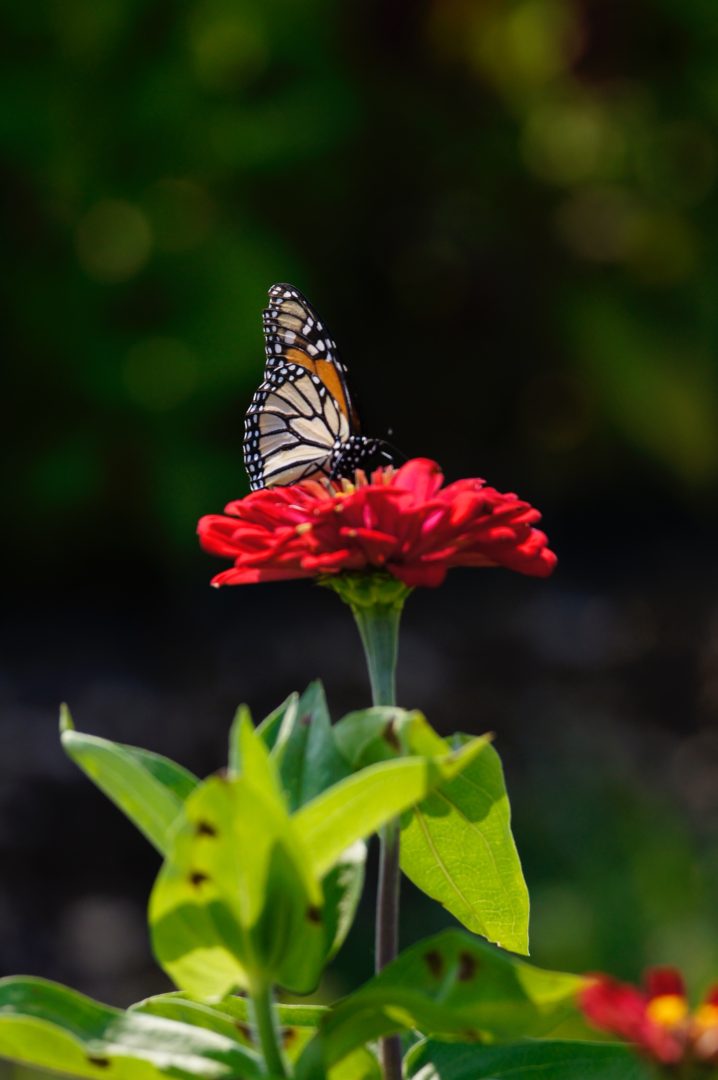
HOST PLANT: When it comes to laying eggs, the female will only choose milkweed plants. Most of these are poisonous to other caterpillars, insects, and animals. When Monarch caterpillars eat milkweed, enough toxins remain in adult butterfly after it emerges from the chrysalis to provide a degree of protection against most birds and natural predators. However, invasive predators including Stinkbug larvae, parasitic wasps, and Tacinid flies are becoming a serious threat to Monarch caterpillars, along with OE spores.
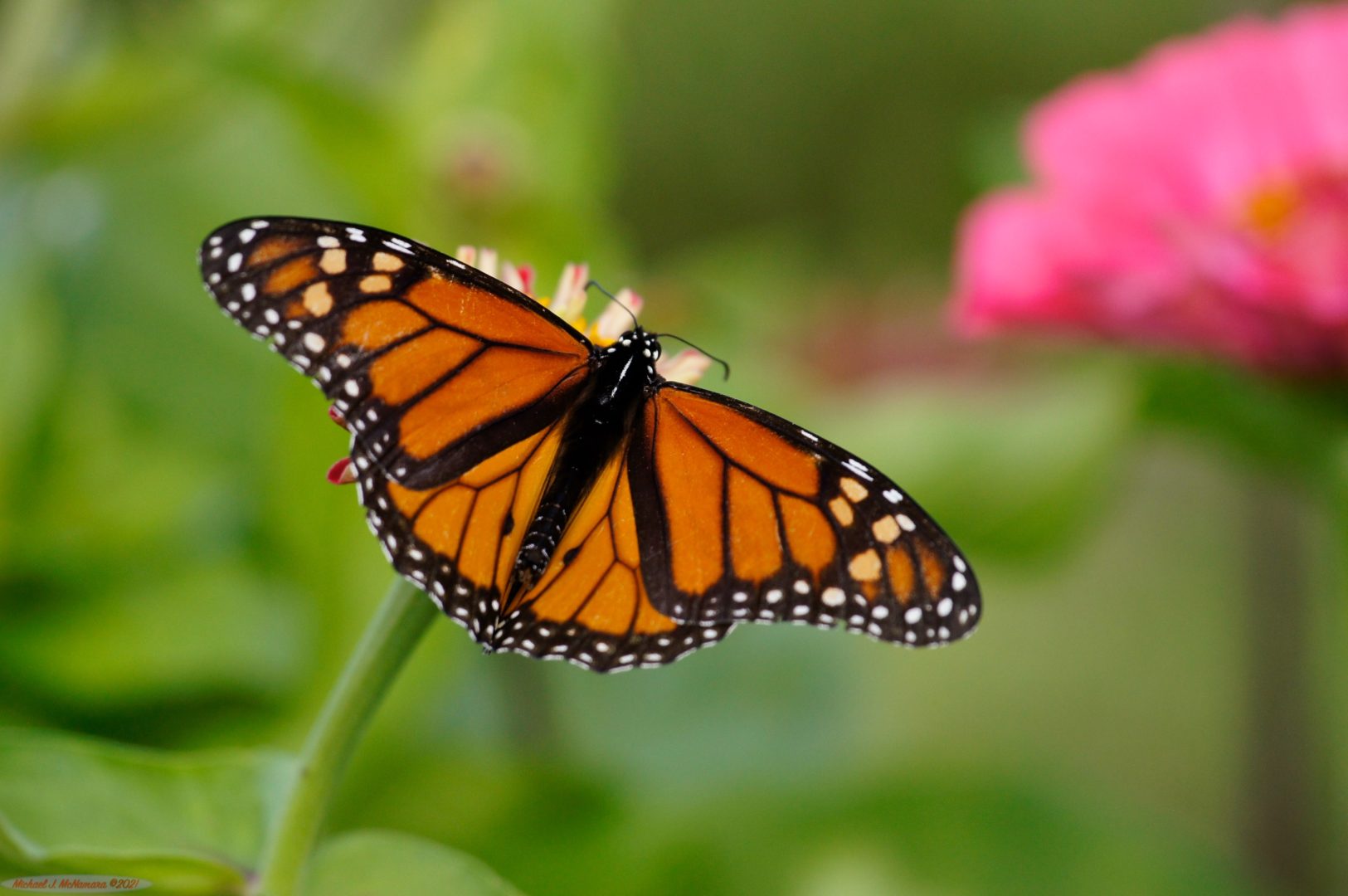
Nationwide, there are nearly 30 varieties of milkweed plants. In the North East and Hudson Valley the most common are Swamp Milkweed, Purple Milkweed, Common Milkweed, and the one I call Monarch Baby Food–Orange Butterfly Weed (also called Pleurisy Root because of its medicinal value).
The Yellow Swallowtail is probably the easiest to identify from a distance due to its large size (up to 5.5 inch wingspan), bright yellow colors and wing patterns. The male is yellow with a black border on its upper wings, and nicknamed the Tiger Swallowtail due to its four black forewing stripes. The female is harder to identify, and may be primarily yellow or black. On the yellow female version there are several blue spots along the hindwing, while the black female version has no yellow patterns on the upper wing, but contains several shades of gray on the upper and lower wings.
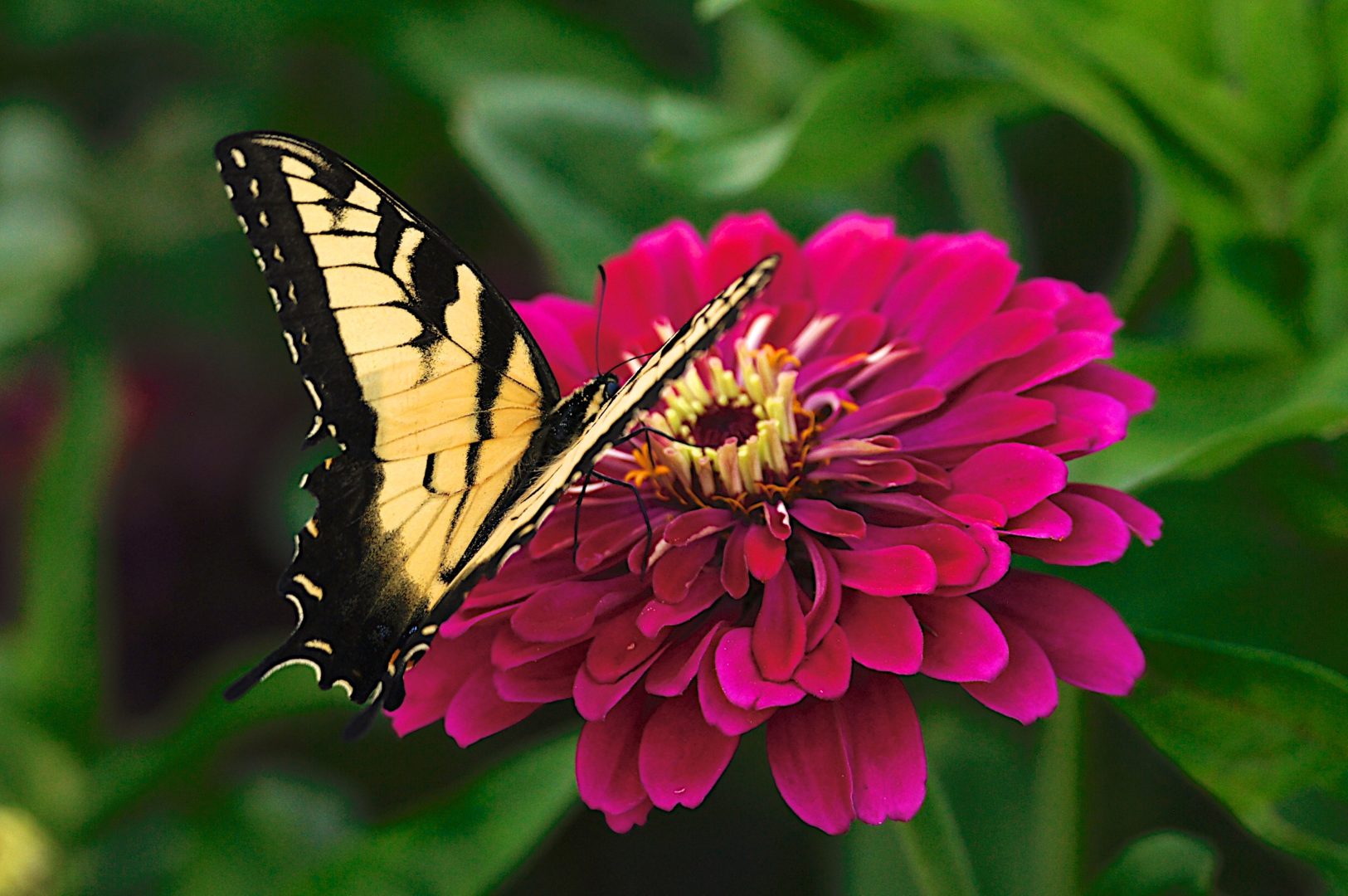
HOST PLANT: The female lays its eggs on all species of magnolia and rose bushes, and several broods can be born throughout the summer months.
About the same size as the Eastern Yellow Swallowtail, the male Black Swallowtail has distinct yellow spots on its upper hindwing, and orange spots mixed with a few blue spots on its underside. The female Black Swallowtail has no yellow on its upper wing but a swath of blue on its lower wing (under a row of white spots). The female lays its eggs exclusively on parsley, so if you notice caterpillars all over your parsley herbs they are most likely from the Black Swallowtail.
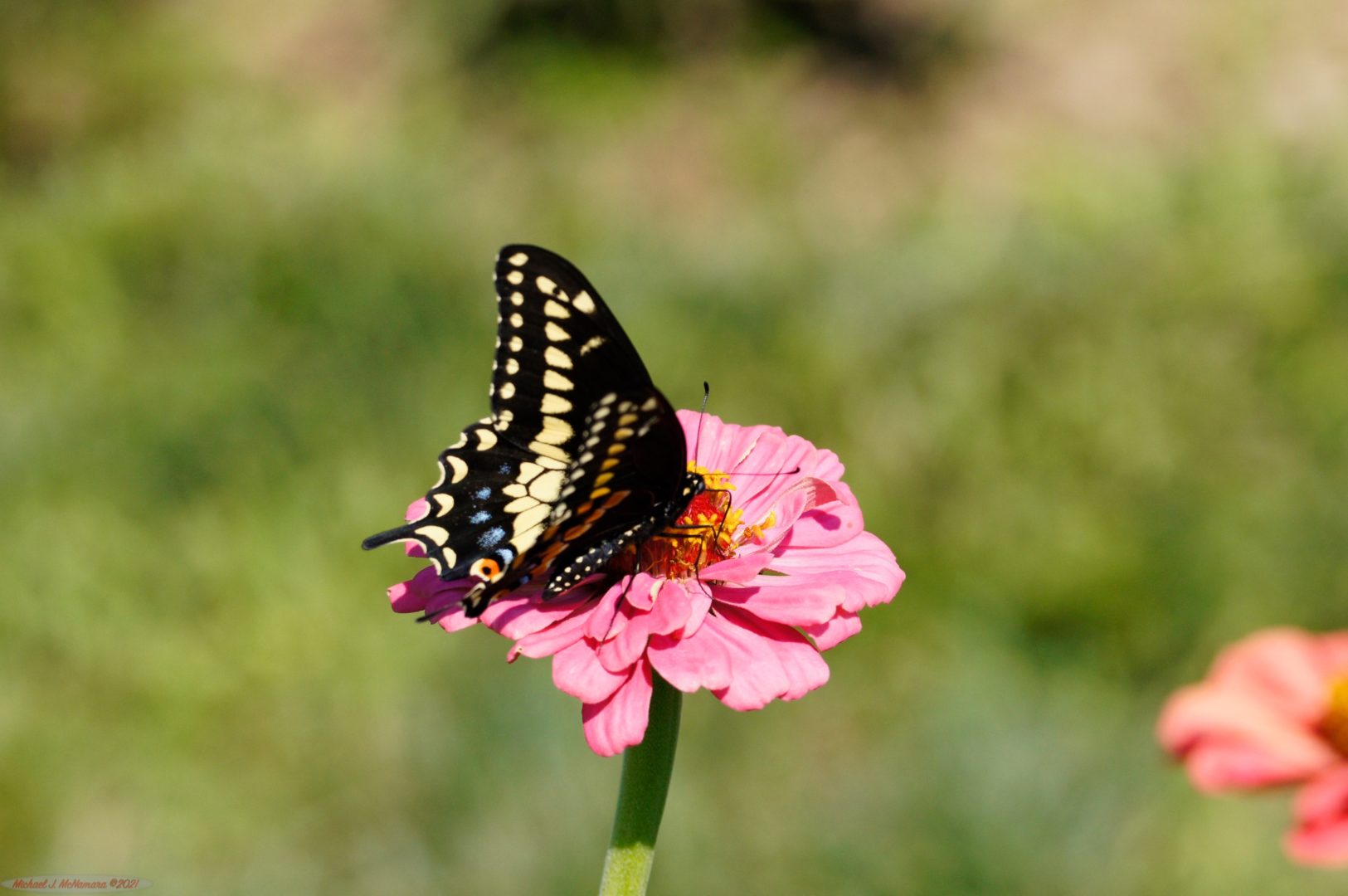
HOST PLANT: The female lays its eggs on all species of magnolia and rose bushes, and several broods can be born throughout the summer months.
The rarest of the large butterflies in the region (I’ve only seen a handful in the last five years), the Queen looks like a male Black Swallowtail from above and at a distance, but as its wings open you’ll notice a nearly solid line of yellow spanning from wing tip to wing tip, and a yellow border around its lower hindwing. It’s also similar in size (up to 3.3-inch wingspan) to the other swallowtails just mentioned, and has a distinct yellow coloration onthe bottom of its wings, unlike the Black Swallowtail. It’s also the only butterfly in this region, other than the Monarch, whose caterpillars thrive on milkweed, and therefore the adult is toxic to most predators.
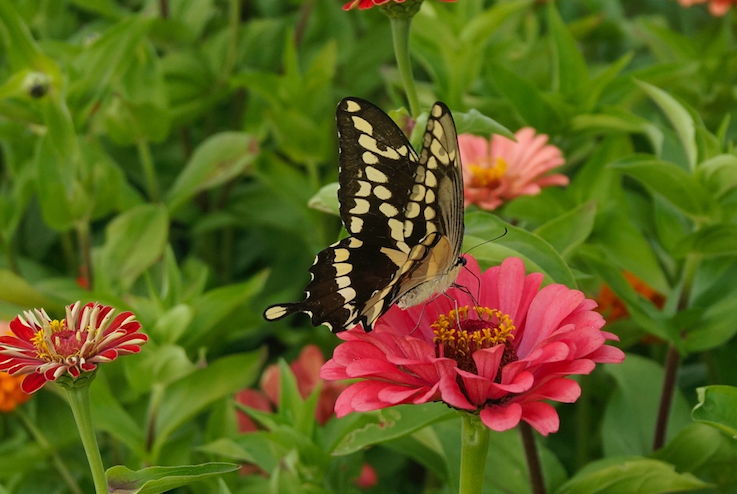
Similar in appearance to the black version of the female Yellow Swallowtail, but typically smaller in size than either the Yellow or Black Swallowtail, the Spicebush Swallowtail can be readily identified when it shows off the metallic green-blue (male) or light blue (female) coloration on its upper hindwings. In both cases, that blueish area is larger and doesn’t have a row of white dots above it as found on the Black Swallowtail. The Spicebush Swallowtail usually flies closer to the ground as well. Females lay their eggs on Spicebush plants, and that explains the name of this critter.
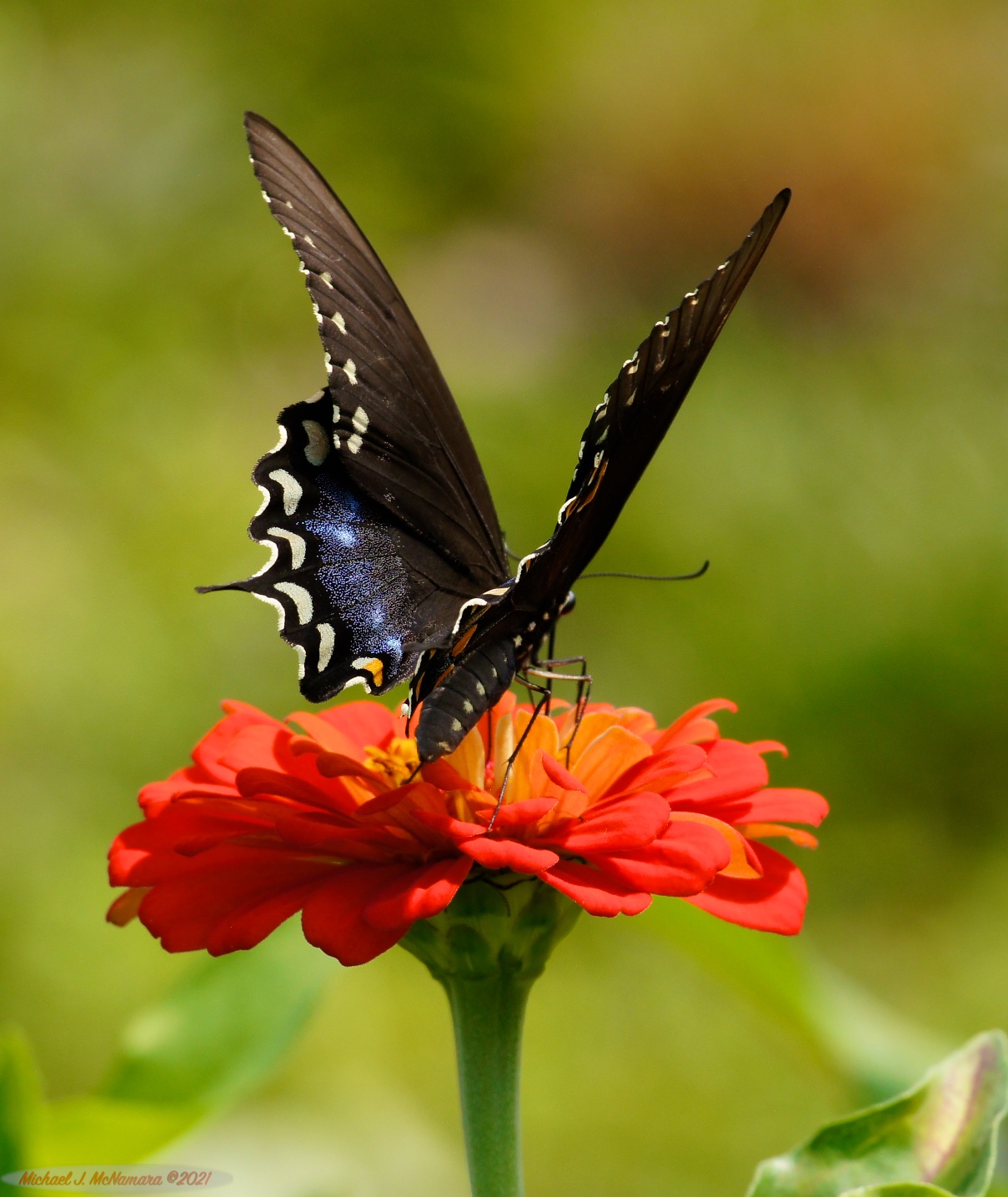
HOST PLANT: The female lays its eggs on all species of magnolia and rose bushes, and several broods can be born throughout the summer months.
Usually among the first butterflies to show up in mid to late June, the Great Spangled Fritillary can easily be confused with the Silver, Aphrodite, and Atlantis Fritillary in regions where they co-exist. However, in lower NY if you spot a Fritillary it’s often this specific version. In my experience, they love to eat from Orange Butterfly Weed, which is often among the first plants to flower (I’ve seen nearly two dozen on one plant).
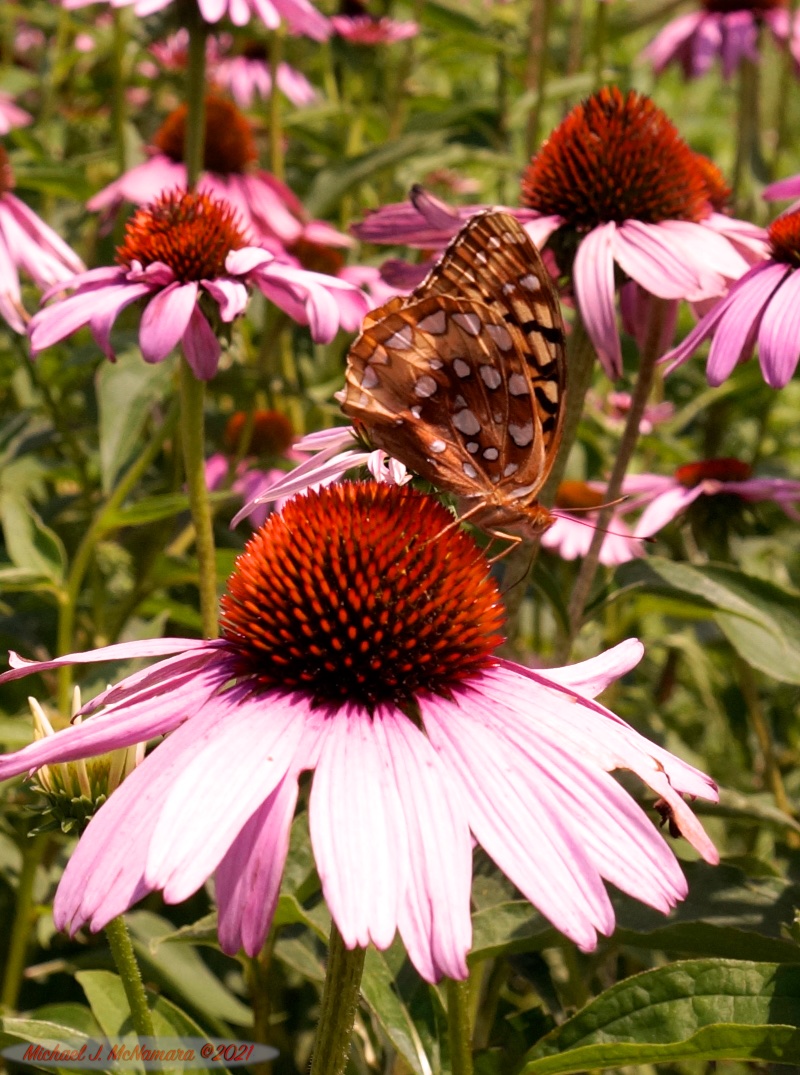
HOST PLANT: The female lays its eggs on native violets and blue violets, both of which appear to be vanishing from many gardens in the area due to replacement by a wide variety of commercial violets. As a result, it’s getting harder to spot Fritillary in places where they were once among the most plentiful.